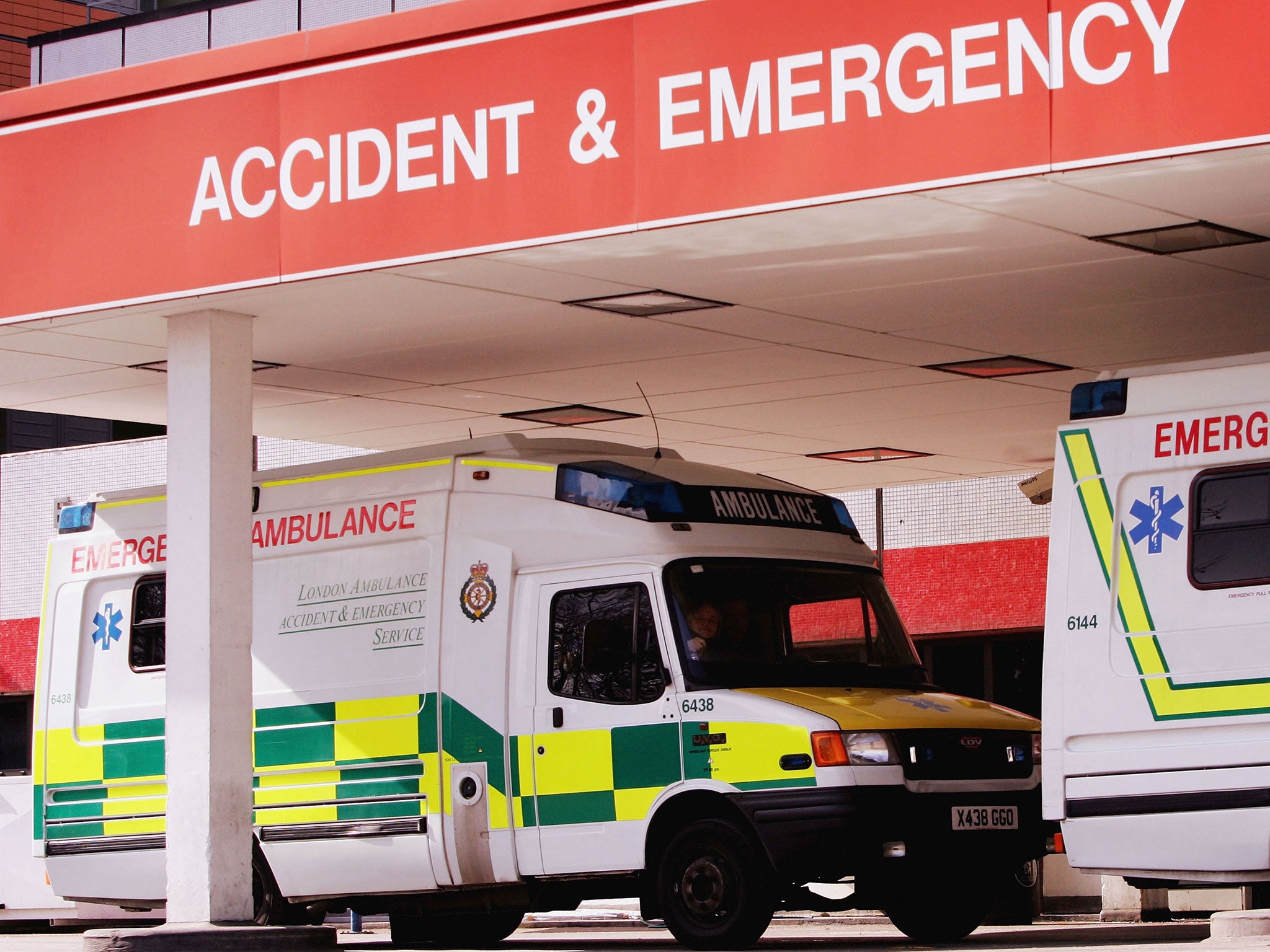NHS A&E waiting time targets missed for '52 weeks in-a-row', new figures show

Accident and Emergency waiting time targets that aim to make sure 95 per cent of all patients are seen within four hours of arrival, have not been met for an entire year, according to new figures from the NHS.
The figures published today show that 14 July 2013 was the last time that all 144 NHS trusts were able to meet their targets over a seven day period.
Since then, Britain’s Accident and Emergency services have missed their target of 95 per cent for a total of 52 weeks in a row.
The latest findings come in a two-year period that has seen hospital attendance grow to 14.2 million– a rise of 1.4 per cent.
Of those 14.2 million visitors, 3.8 million ended up with an admission into the hospital, a rise of 5.7 per cent when compared with the two years before.
In the previous years it has been assumed that A&E services would struggle in the winter due to more ill people leading to greater demand on the service.
The new findings show, however, that the problem of NHS emergency services not meeting their targets is becoming an all year round problem.
Patients Association chief executive Katherine Murphy said: "We are increasingly hearing from patients about problems at A&E. It used to be just a winter phenomenon, but this shows it has become an issue all-year round."
Last year, health secretary, Jeremy Hunt, gave Britain’s emergency services an additional £500 million in funding in an attempt to ensure targets across the board were met.
However, the latest findings, show that this has yet to have had its desired effect.
Health experts say that it is a combination of an ageing population and a shortage of doctors that is leading to the current Accident and Emergency crisis.
Sarah Pinto-Duschinsky, of NHS England, refutes that there is a crisis and says the latest figures and says the inclusion of walk-in centres had eschewed the figures.
She said that if these were taken out it would have proved that the NHS’s A&E services was doing well and meeting their targets of 95 per cent.
She said: "We are determined to maintain these high standards despite the pressure the NHS is under. NHS staff should be given the credit they deserve."
Join our commenting forum
Join thought-provoking conversations, follow other Independent readers and see their replies
Comments